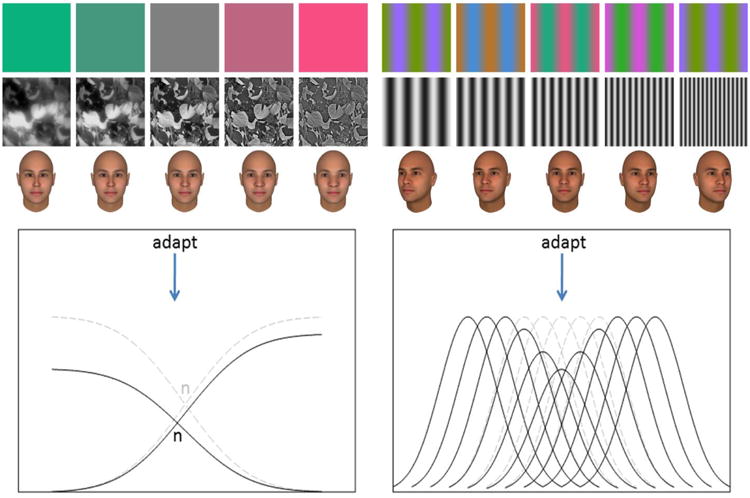Figure 1.

Examples of similar perceptual aftereffects across different stimulus domains. Left panel: adaptation to a mean color, blur, or faces produces roughly global shifts in the appearance of stimuli relative to a norm (e.g. gray, focused, undistorted), so that the adapting stimulus appears more neutral, with no aftereffect when adapting to the norm (n). This norm-based coding pattern and its adaptation can arise in mechanisms broadly tuned to the stimulus dimension, or if the stimulus itself is broad rather than punctate (e.g. representing a bias in the stimulus spectrum). Right panel: adaptation to color contrast, spatial frequency, or viewpoint instead biases the appearance of other stimuli away from the adapting level, with no change in the perceived level (e.g. size) of the adapt level itself, and produces similar aftereffects after adapting to any level across the dimension. This pattern implicates coding in multiple more narrowly-tuned channels.
